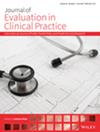Rehabilitation Management of Neck Pain—Development of a Diagnostic Framework Based on the Pain and Disability Drivers Management Model
Abstract
Rationale
Neck pain is a major cause of disability worldwide, and current rehabilitation strategies show limited effectiveness. Subgrouping patients by their primary pain and disability drivers can help tailor treatments. At this end, the Pain and Disability Drivers Management (PDDM) was developed and has demonstrated preliminary effectiveness in the management of low back pain. Nevertheless, the PDDM model was only validated for this population. Adapting this framework to patients with neck pain would provide a more global view of the patient's experience of pain and support a genuine biopsychosocial intervention.
Aims and Objectives
The aim of this study was to develop and validate the content of the PDDM model for patients living with neck pain.
Methods
Through a modified DELPHI study design, participants with clinical and research expertize in rehabilitation of neck pain were invited to participate. A questionnaire was developed using literature reviews and endorsed by a steering committee. The relevance of each element of the newly adapted model was evaluated on a 4-point Likert scale. An item reached consensus if it obtained the predefined threshold of > 78% “relevant” and “very relevant.” Participants left comments on terminology and recommended items to add in early rounds. Quantitative and qualitative analyses were performed.
Results
An invitation was sent to 1650 potential participants, from which 155 accessed the survey, 64 completed the first round and 55 the second round. A total of 70 elements met consensus and were distributed across six domains: “Nociceptive pain drivers”, “nociplastic pain drivers,” “drivers associated with neuropathic pain”, “comorbidity drivers”, “cognitive-emotional drivers” and “environmental or lifestyle drivers, and social determinants of health.”
Conclusion
Through a modified DELPHI study, the PDDM model was updated and adapted to people with neck pain. Subsequent steps include clinical integration and measures of efficacy when used for assessment/treatment.


 求助内容:
求助内容: 应助结果提醒方式:
应助结果提醒方式:


